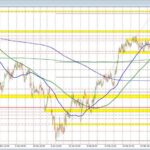
GBP/USD Currency Pair Analysis: April 2025 – Insights and Market Trends
Tháng 4 7, 2025
The Offshore Yuan’s Rollercoaster Ride: Analyzing the Impact of U.S. Tariffs
Tháng 4 7, 2025Understanding the Implications of President Trump’s New Tariffs and China’s Response
On April 2, 2025, President Trump unveiled a landmark decision that is poised to significantly impact U.S.-China trade relations. Announcing a sweeping 10% global tariff on all imports, the President invoked the International Emergency Economic Powers Act (IEEPA) to implement this measure, which will take effect on April 5, 2025. This move stems from ongoing concerns about trade imbalances and aims to protect domestic industries from what the administration interprets as unfair competitive practices from abroad.
Expanded Tariff Measures Targeting Nonreciprocal Trade Practices
Beyond the broad global tariff, President Trump has specifically identified 57 countries that he claims engage in nonreciprocal trade practices. These nations will see increased tariffs ranging from 11% to 50%, effective April 9, 2025. The implications of these tariffs are vast, as they could escalate trade tensions further and complicate international commerce. Stakeholders across various sectors—including manufacturing, agriculture, and technology—are watching closely, as any ripple effects from these economic policies could affect pricing, availability, and consumer choices.
China’s Strategic Countermeasures
In a swift response to these tariff actions, China has announced plans to levy a 34% tariff on U.S. products, starting April 10, 2025. This retaliatory measure mirrors the U.S. tariffs and signals China’s intention to protect its own economic interests. Earlier, in February 2025, Beijing had already imposed tariffs on American goods such as coal, liquefied natural gas, and agricultural machinery, a clear indication that China is prepared to respond decisively to U.S. trade policies. Notably, this response relates to a broader context of trade relations, including previous strategic moves, as detailed in this analysis of China’s strategic responses.
Trade economist experts believe that these escalating tariffs may not only strain bilateral relations but could also lead to significant disruptions in global supply chains. Industries reliant on raw materials and components from both countries might face heightened costs and uncertainty, potentially passing these increases onto consumers.
President Trump’s Stance and Future Implications
In a statement that underscores the tension, President Trump has issued a warning: should China refuse to withdraw its retaliatory measures, he is prepared to impose additional tariffs. This ongoing cycle of retaliatory tariffs encapsulates the broader struggle between the two economic powerhouses, each striving to rectify perceived inequities while safeguarding their domestic markets.
The implications of this trade conflict extend beyond immediate economic impacts. Investors, consumers, and businesses alike must navigate this precarious landscape shaped by policy changes and potential future retaliatory measures. As this economic scenario continues to unfold, staying informed about developments in trade policies and their repercussions will be crucial for anyone involved in international trade or dependent on global supply chains.
In summary, as President Trump and China engage in this tug-of-war of tariffs, it is important for stakeholders to remain vigilant. With both sides standing firm, the potential for further escalation remains a pressing concern in U.S.-China trade relations.

